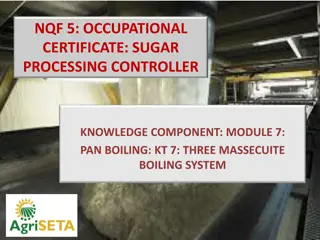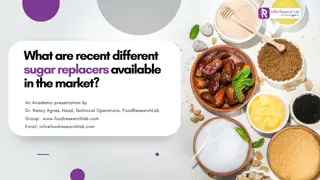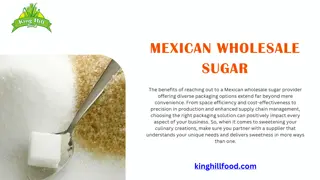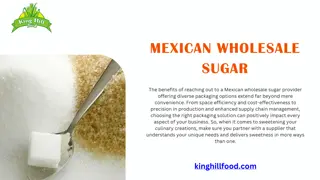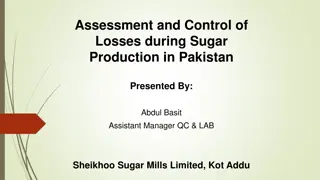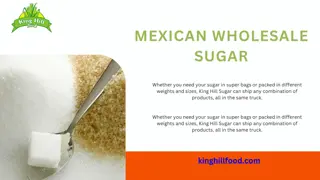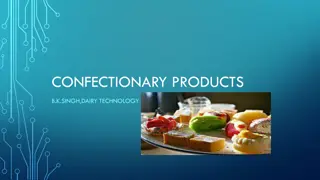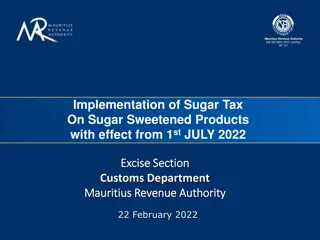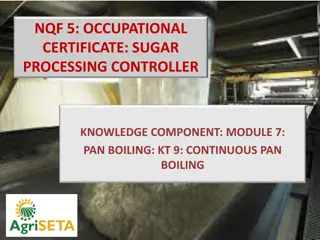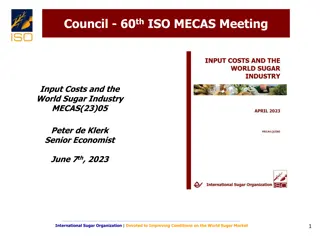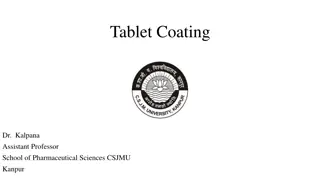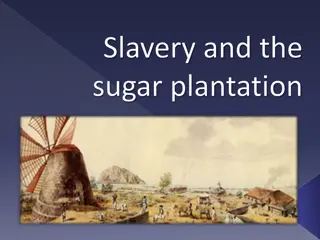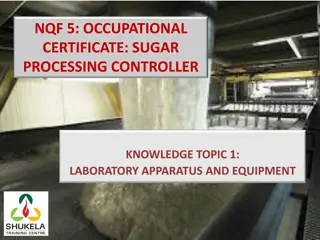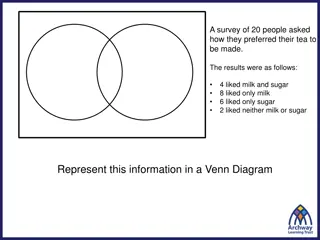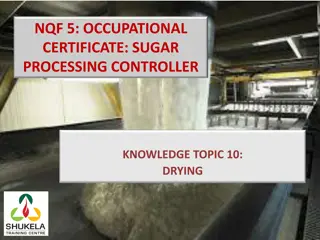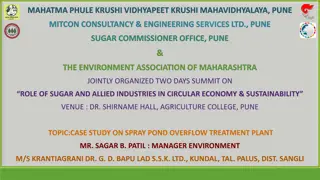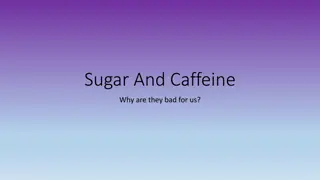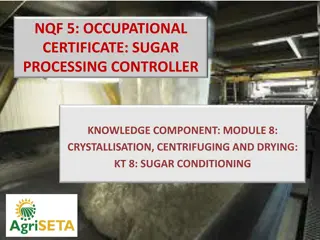Evolution of Sugar Production: a Historical Perspective
Sugar, a key commodity throughout history, has a rich background in human culture, trade, and technology. The journey of sugar from ancient India to the modern-day challenges of high fructose corn syrup in the United States reflects a dynamic industry shaped by advancements in refining technologies, trade expansions, and changing consumer preferences.
Download Presentation

Please find below an Image/Link to download the presentation.
The content on the website is provided AS IS for your information and personal use only. It may not be sold, licensed, or shared on other websites without obtaining consent from the author. Download presentation by click this link. If you encounter any issues during the download, it is possible that the publisher has removed the file from their server.
E N D
Presentation Transcript
Chemical Process Industries University of Diyala Chemical Engineering Department Lecture (9) .
Sugar Industry Sugar has been an important commodity historically due to a variety of factors, including the human appetite for sweet foods and drinks, the complementarity that sugar brings to the other flavors in food, its preservation and fermentation properties, and the calories it provides. Sugar (or more precisely sucrose) was first prepared in India.
It was brought back to the Western world by the Greek conquerorAlexander the Great in 325 BCE. Trade in sugar was further expanded in the Mediterranean region by the Arab conquest of the sixth century CE.
Improvements in the crystallization process expanded the sugar trade (especially in the form of molasses) in the twelfth century. However, the limited supply of sugar in the international market caused refined sugar to be relatively costly until the production of sugar by European colonies in the Americas grew after 1700.
This expansion, coupled with improvements in refining technologies that reduced unwanted tastes in the sweetener, caused sugar to replace other sweeteners such as honey, becoming the dominant sweetener over time.
While demand for sugar remained relatively unaffected by the introduction of non-nutritive sweeteners, in the early twenty-first century the dominance has been challenged, particularly in the United States, by high fructose corn syrup (HFCS). The competition between sugar and HFCS raises several policy questions.
SUGAR PRODUCTION Various domestic factors affect the production of sugar and institutions within the U.S. sugar market. As discussed, sugar prices in the United States are supported by a TRQ. Adding a layer of complication, the government supports the domestic price of sugar by providing a nonrecourse loan for raw sugar at 18 cents per pound and refined sugar produced from sugar beets at 22.9 cents per pound, according to 2002 statistics (Haley and Suarez 2002).
If the market price falls below 18 cents per pound, producers (or more accurately sugar mills) store their raw sugar and receive a loan from the government of 18 cents for every pound of raw sugar placed in storage. If the market price for sugar rises over 18 cents per pound plus any interest accrued, they take the sugar out of storage, sell it at the prevailing market price, and repay the loan.
However, if the market price for sugar does not exceed 18 cents per pound plus accrued interest during the marketing year, producers simply forfeit sugar in storage to the government in fulfillment of the loan. While the nonrecourse loan program for sugar is typical for agricultural commodities in the United States, it is encumbered by the Dole Amendment, which requires the sugar program to be operated at no cost to the government.
Certain characteristics of sugar production have implications for vertical integration in the market channel for sugar. Sugar is produced from two different primary crops: sugarcane and sugar beets. While the end product (i.e., sucrose) is identical for each process, each crop implies a different market channel.
The production of sugarcane typically occurs in tropical or subtropical climate zones. The stalks containing the sucrose are removed from the field for milling that produces a raw form of sugar that is relatively stable. The raw sugar is then later refined into table sugar, removing impurities that may affect the flavor.
Technical considerations require that these mills be located close to production. When the stalks are harvested in the field the sucrose content of the sugarcane starts to deteriorate. Further, the sucrose content of standing sugarcane deteriorates after a freeze.
Following Coasess paradigm (1937) that the boundaries of the firm are determined by the comparison of transaction costs with the diseconomies of scope, the technical characteristics of sugarcane are conducive to the vertical integration of production of processing of sugarcane. Specifically, in Coases s paradigm the boundaries of a firm are dictated by a comparison of transaction costs and diseconomies of scope.
In this case transaction costs include the possibility of using a thin market to extract monopolistic rents while the diseconomies of scope involve the economic costs of carrying out an activity that is outside of the firm s specialization. In the case of sugarcane, the potential deterioration of quality gives rise to the possibility of monopolistic rents.
The possible economic losses of economic rents more than offset the economic costs of diversification into processing facilities. Viewing the transaction from the other side, the diversification into sugarcane production insures a steady supply of sugarcane into the future, reducing the risk of investment.




